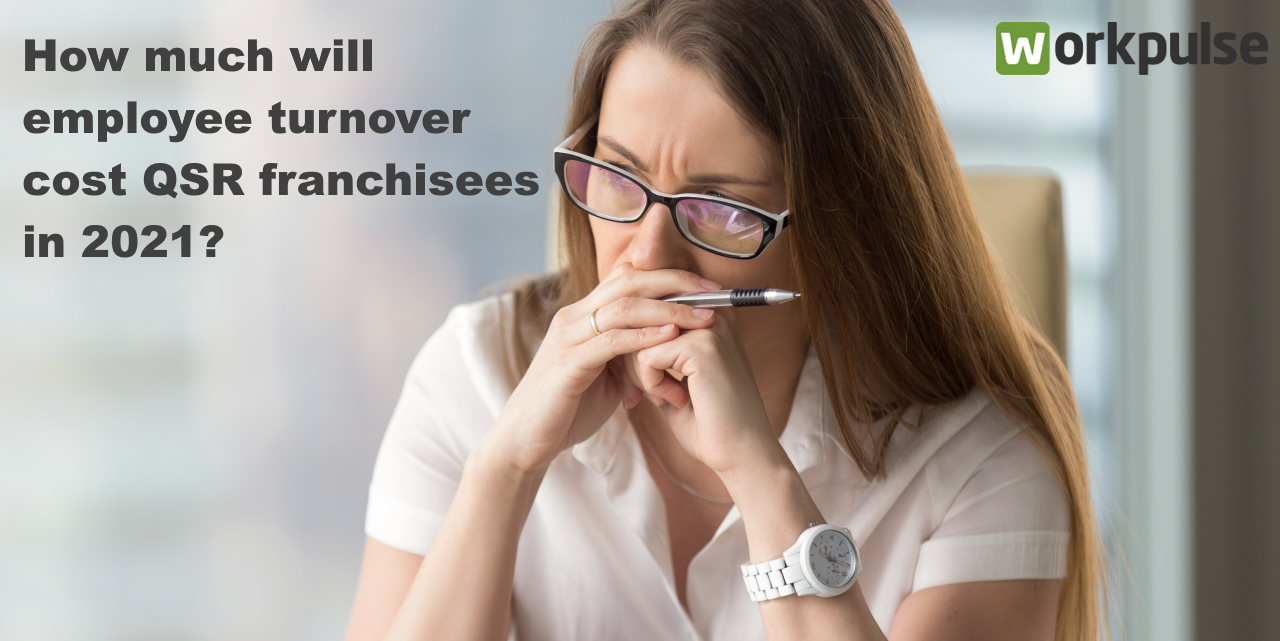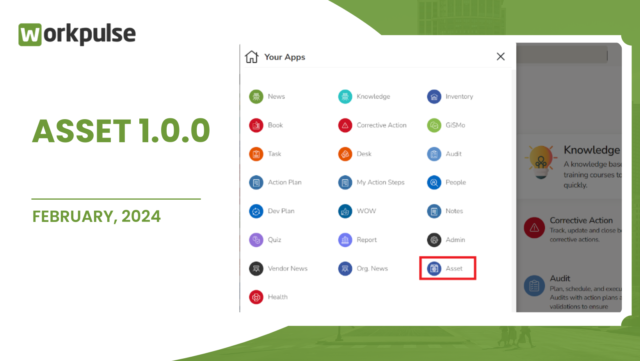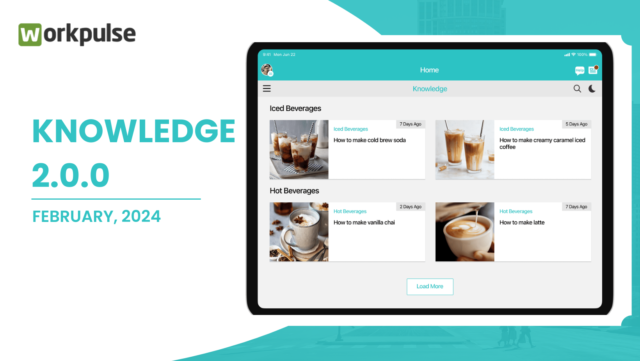Do you know one of the biggest reasons behind restaurants losing money year on year? It’s not low sales, or inventory, or even operational costs. Employee turnover in the QSR industry has been higher than in any other industry with the turnover rate reaching close to 150%. With such a staggering turnover, restaurants are at a severe risk of losing $150,000 on average per year. The actual turnover rates and cost to restaurants are significantly higher in reality.
High employee turnover in the QSR industry
Employee turnover in the QSR industry in the US has always been higher than other industries. As per the details provided by the Bureau of Labor, there has been an increase in turnover rates over the last decade and despite the recent pandemic, the situation has not improved at all.
The QSR industry hires the highest percentage of teenagers as compared to any other industry. For most of these teens, this would be their first job and without proper onboarding, training, and tools, these resources would jump to another lucrative opportunity in a heartbeat. Secondly, the high turnover rate in this industry also implies high vacancy. The moment employees at a particular restaurant come to know that employees at some other establishment are getting better pay, they would immediately grab the opportunity.
The hiring cycle continuously creates constant demand and supply of employees. The only way to break this cycle is to improve employee retention which would require a new strategy involving a complete revamp of the employee onboarding process, empowering them with the right tools and technology, enhancing productivity with the use of actionable data and analytics, engaging employees with recognitions and development programs, and most importantly, encouraging accountability at all levels.
Cost of losing a single employee
In order to truly understand the cost implications of losing employees, let us look at some key metrics. According to a research done by the Center for Hospitality Research at Cornell, it costs restaurant an average of $5,864 for a single employee turnover from the front-line staff. As the turnover is more common in the front-line rather than at an executive or manager level, this is the most relevant metric that any restaurant owner would be interested in.
Now, $5,864 may not give much clarity on how the cost was calculated. Take a look at the figure below.
Breakup of the areas impacting the cost of employee turnover in restaurants (Source: Center for Hospitality Research – Cornell)
Based on the above representation, the cost breakup for the suggested $5,864 per employee comes out to be:
- Pre-Departure Cost: $176
- Recruitment Cost: $1,173
- Selection (Process) Cost: $645
- Onboarding, Orientation, and Training Costs: $821
- Productivity Loss Cost: $3,049
This breakdown only indicates the direct cost of employee turnover. If we take into account the loss arising from the disruption of the work environment, impact on brand’s reputation, impact on service quality, and perception of customers due to frequently changing staff, then the value would be far greater than $5,864.
If you have a team of 100 employees across all locations and your employee turnover rate is 75%, then you are losing $439,800 on average (if we consider the cost of turnover at the front-line level). Are you prepared to risk losing such a huge amount by assuming your team to be expendable? It’s time to think again!
Impact of employee turnover
While employee turnover definitely has an impact on the organization’s finances, there are things beyond cost which gets affected due to the attrition. A good way to understand the impact would be to notice the difference in work environment, customer perception, brand image, productivity, and customer feedback. You will be able to identify a trend which would help you to focus on areas that need immediate attention.
Some of the key areas where the impact of employee turnover is felt include:
-
Loss of institutional knowledge
Every time a person gets employed in an organization, they undergo training to learn the nuances of your business, which may include the details of your processes and other trade secrets. During exit, the employee takes all of this knowledge and training with him, and eventually, it is the other company which benefits from this.
Providing training to the replacement staff might incur cost but no investment can fill the void for on-job experience which can only be gathered over a period of time. As front-staff are the ones that interact directly with customers, it is absolutely crucial that they are trained as per the brand’s guidelines. A high turnover rate can disrupt the daily operations and cause customer dissatisfaction.
-
Loss of morale
When employees leave, especially if the exit is unplanned, the immediate resolution is to distribute the work amongst the existing team members. This does not always go well and team members may feel resentful for having to manage extra work without additional pay or promotion.
The other impact in terms of loss of morale could be employees losing confidence in the organization when they realize that the management is unable to retain its team members. As a result of this insecurity, it is highly probable that some employees will switch to other opportunities.
-
Lack of managerial focus
With a high turnover rate, the primary focus for the management would be to recruit more people in order to fill the gap in workforce. Due to this, the management doesn’t get enough time to focus on business strategies, growth, and operations. The organization not only loses potential opportunities to grow, but also creates a stressful environment for the leaders and executives. This stress can be passed on to the subordinates and will affect the productivity of the entire team.
-
Loss of credibility
The high employee turnover rate leads to a loss of credibility in the eyes of the employees as well as guests. Internally, you will notice a loss of productivity while externally, you will see a fall in the daily turnouts. The front-line staff usually try to build a relation with customers and it is this bond which ensures customers coming in to dine at the restaurants. With frequently changing front-line staff, the guests may lose confidence in the stability of the restaurant itself.
Reduce employee turnover rate at your restaurant with the workpulse platform
Employee onboarding and training takes a minimum of 3 weeks wherein the person becomes familiar with the processes and operations at the restaurant location. Expected productivity is achieved within 4 months on average. Considering that employees generally stay on board for 2-3 months, they never truly get a chance to perform at their best. The key to reducing turnover rate is to ensure that the employees are trained faster with quick deployment in real operational scenarios. In order to achieve this, the onboarding would have to focus on getting employees familiar with the SOPs without going into a lot of technical details which can always be learnt on the go. Moreover, the employees have to be engaged and made accountable for their tasks.
By embracing technology, restaurants not only empower their team with the right tools, but also provide actionable data and insights which helps them get real time achievements. The tools also reduce redundancy and manual efforts, thereby allowing employees to complete their tasks efficiently, accurately, and in a timely manner.
The Workpulse platform has been known to help businesses achieve operational excellence and improve productivity across all levels. But the benefits do not end here. Based on our survey of 3000+ QSRs using Workpulse, we were able to identify exactly how our subscribers have reduced employee turnover.
The platform implements SOPs in the solution which require minimal training to execute in a real-world scenario. This meant that the training could be completed faster and with the digital interface, the employees could get their work completed before time. The remaining time was used for personal development, upskilling, and willingly contributing to other areas.
Employees who used the platform were encouraged to become accountable and this alone made a noticeable positive impact on the restaurant’s efficiency. Managers and senior executives were able to get a quick snapshot of any of their location’s performance as well as the performance of the people working in those locations. This allowed them to identify and coach specific team members or managerial prospects before it was too late. The timely identification of training needs actually boosted the morale of the employees and kept them engaged with their managers.
A senior executive at Atlantic Region Foods Corp (Dunkin Franchisee) said, “By implementing our SOPs in a digital system, we were able to get our employees onboarded faster as they simply had to follow the steps and complete the respective tasks. The digital environment also helped in providing real time data and trend analysis which clearly highlighted the performance metrics across different levels of the organization. The Workpulse Platform not only helped us improve operational efficiency across all of our locations, but also enabled us to address the core issues behind employee turnover.”
The Workpulse Platform is more than just an operations management solution. It is the business growth engine that focuses on technology enablement, human capital development, and business strategy alignment for providing a 360-degree proactive approach to achieving overall excellence. Still worried about high employee turnover rates in 2021? Talk to a Workpulse Consultant to know exactly how the platform can make you confident about keeping your employees happy and retaining them with higher productivity.





